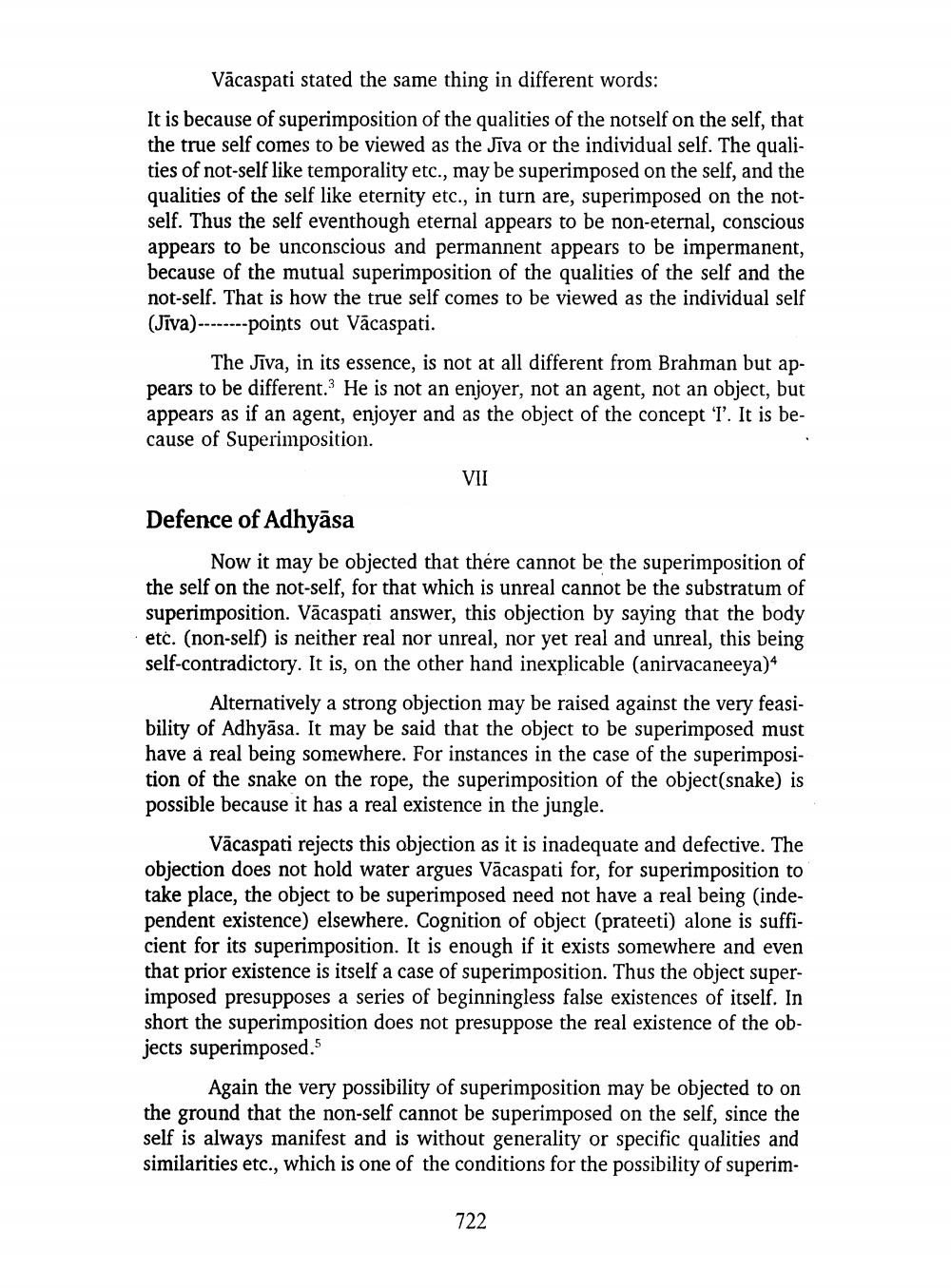________________
Vācaspati stated the same thing in different words:
It is because of superimposition of the qualities of the notself on the self, that the true self comes to be viewed as the Jiva or the individual self. The qualities of not-self like temporality etc., may be superimposed on the self, and the qualities of the self like eternity etc., in turn are, superimposed on the notself. Thus the self eventhough eternal appears to be non-eternal, conscious appears to be unconscious and permannent appears to be impermanent, because of the mutual superimposition of the qualities of the self and the not-self. That is how the true self comes to be viewed as the individual self (Jiva) --------points out Vācaspati.
The Jiva, in its essence, is not at all different from Brahman but appears to be different. He is not an enjoyer, not an agent, not an object, but appears as if an agent, enjoyer and as the object of the concept 'l'. It is because of Superimposition.
VII
Defence of Adhyāsa
Now it may be objected that there cannot be the superimposition of the self on the not-self, for that which is unreal cannot be the substratum of superimposition. Vācaspati answer, this objection by saying that the body etc. (non-self) is neither real nor unreal, nor yet real and unreal, this being self-contradictory. It is, on the other hand inexplicable (anirvacaneeya)
Alternatively a strong objection may be raised against the very feasibility of Adhyāsa. It may be said that the object to be superimposed must have a real being somewhere. For instances in the case of the superimposition of the snake on the rope, the superimposition of the object(snake) is possible because it has a real existence in the jungle.
Vācaspati rejects this objection as it is inadequate and defective. The objection does not hold water argues Vācaspati for, for superimposition to take place, the object to be superimposed need not have a real being (independent existence) elsewhere. Cognition of object (prateeti) alone is sufficient for its superimposition. It is enough if it exists somewhere and even that prior existence is itself a case of superimposition. Thus the object superimposed presupposes a series of beginningless false existences of itself. In short the superimposition does not presuppose the real existence of the objects superimposed.
Again the very possibility of superimposition may be objected to on the ground that the non-self cannot be superimposed on the self, since the self is always manifest and is without generality or specific qualities and similarities etc., which is one of the conditions for the possibility of superim
722




